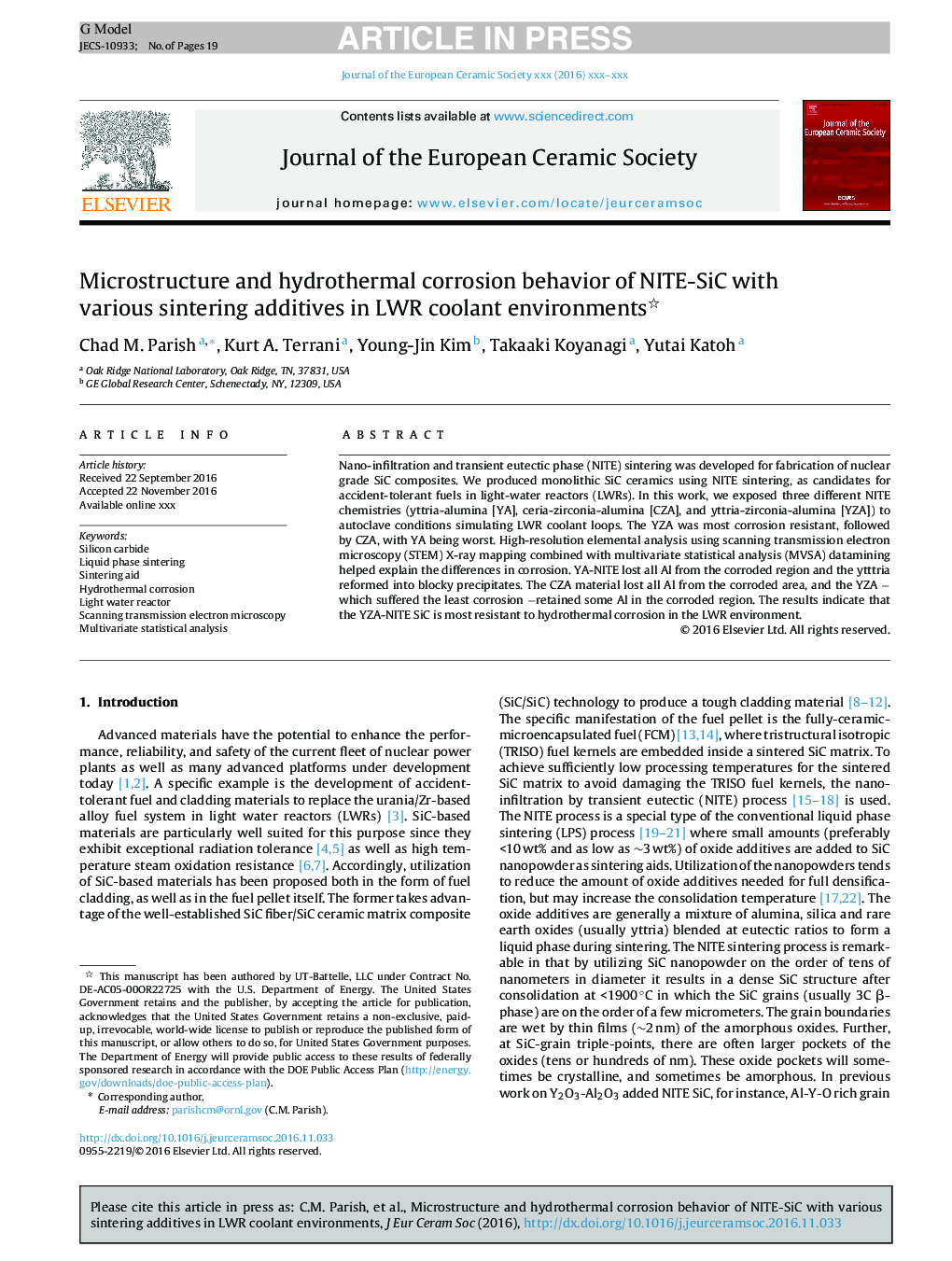| Article ID | Journal | Published Year | Pages | File Type |
|---|---|---|---|---|
| 5440651 | Journal of the European Ceramic Society | 2017 | 19 Pages |
Abstract
Nano-infiltration and transient eutectic phase (NITE) sintering was developed for fabrication of nuclear grade SiC composites. We produced monolithic SiC ceramics using NITE sintering, as candidates for accident-tolerant fuels in light-water reactors (LWRs). In this work, we exposed three different NITE chemistries (yttria-alumina [YA], ceria-zirconia-alumina [CZA], and yttria-zirconia-alumina [YZA]) to autoclave conditions simulating LWR coolant loops. The YZA was most corrosion resistant, followed by CZA, with YA being worst. High-resolution elemental analysis using scanning transmission electron microscopy (STEM) X-ray mapping combined with multivariate statistical analysis (MVSA) datamining helped explain the differences in corrosion. YA-NITE lost all Al from the corroded region and the ytttria reformed into blocky precipitates. The CZA material lost all Al from the corroded area, and the YZA â which suffered the least corrosion âretained some Al in the corroded region. The results indicate that the YZA-NITE SiC is most resistant to hydrothermal corrosion in the LWR environment.
Keywords
Related Topics
Physical Sciences and Engineering
Materials Science
Ceramics and Composites
Authors
Chad M. Parish, Kurt A. Terrani, Young-Jin Kim, Takaaki Koyanagi, Yutai Katoh,
